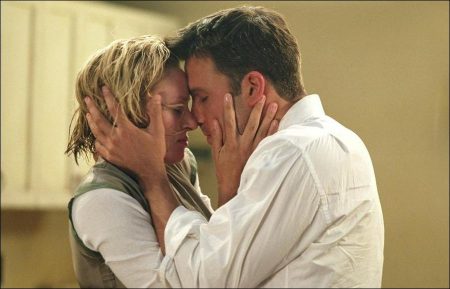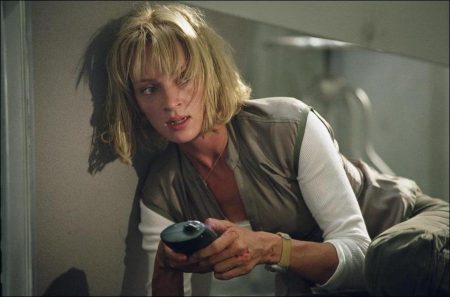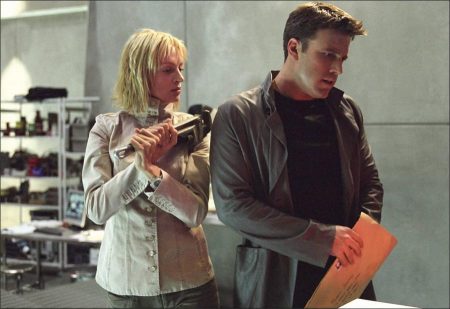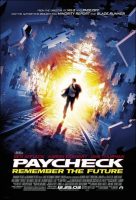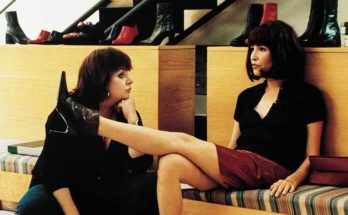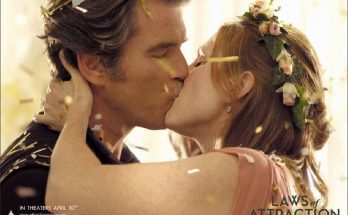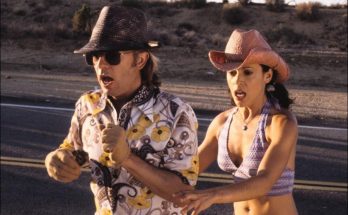Paycheck Movie Trailer. Director John Woo and producer Terence Chang assembled some of their most trusted collaborators in the making of “Paycheck,” including cinematographer Jeffrey Kimball, ASC, weapons coorindator Rock Galotti and stunt brothers Gregg and Brian Smrz. Shot entirely in Vancouver, Canada, which doubled for Seattle, the production team made their home base at Vancouver Film Studios for the four-month shoot.
While Woo had worked with Kimball, Galotti and the Smrz brothers before, it was the first time that this team included production designer William Sandell. Having collaborated with a number of distinguished directors in his career, including Wolfgang Petersen on “The Perfect Storm” and recently Peter Weir on “Master and Commander: The Far Side of the World,” Sandell says he was fascinated with how Woo juxtaposed such a tremendous love story into a science fiction framework.
“John has a way of making the smallest things magical,” recalls Sandell, who brought a team of illustrators and model builders together to flesh out the vision of the film months in advance of shooting. “We decided to design the production as a stylish mystery, not your average high-concept futuristic design that can have a tendency to look artificial. Instead, we went with a slick, clean look, which we felt better served the sophisticated nature of the story.”
Jeffrey Kimball, ASC, the cinematographer Woo has worked with since “Mission: Impossible 2,” warned Sandell very early on about the necessity for a lot of room in the sets, knowing that the director would want the freedom to move within them.
“Jeffrey explained to me that things would be very active on the set, so I got a little wild, making it possible for each set to break apart like a puzzle box, remembers Sendell. “John wanted to be able to move in and out at will, so the sets turned out to be huge.”
Kimball affirms that when working with Woo, the camera is in constant motion, and often while trying to execute the director’s vision, it’s not easy to keep up with him. “The hard part for me is figuring out how to light when you’re looking around at all these different directions at once,” says Kimball. “It’s always quite a challenge for me, but I definitely enjoy it.”
Sandell built many sets on the sound stage, including Rachel’s apartment, the FBI offices, the interrogation rooms and Rethrick’s office. He also used the sound stage for what he calls his “crowning achievement,” the massive biolab set, which also housed Jennings’ lab. A superb concrete and steel monolith in perfect harmony with the themes of Philip K. Dick’s story, the biolab also delicately incorporated the earthy, human warmth of Jennings and Rachel’s developing love, as represented in the contrasting greenery and growing plant life in Rachel’s environmental biology lab.
In addition to the lab set, Sandell’s personal favorite was the interior of Rachel’s apartment. “It’s a beautiful little jewel, surrounded by a translight reflecting a local location that had a very sophisticated design feel,” recalls Sandell. “We extrapolated from that exterior design and built the inside of Rachel’s apartment to reflect the sophistication of all that surrounded it.”
Sandell also had the daunting challenge of building a subway system — in three weeks. Constructed under a huge circus tent, the production designer and his team build 250 running feet of tunnel and track, making the chase scenes both exciting and realistic.
Also in keeping with John Woo’s scaled-down vision of futurism, costume designer Eric Edell Phillips made stylized and sleek costumes rooted in contemporary aesthetics. “John didn’t want to make a statement with the wardrobe,” says Phillips. “Rather, he wanted the characters’ subtle attire to evoke a clean modernism.” Practical considerations also govern a designer when creating the wardrobe for a John Woo film, in that the clothing must be made to endure the rigors of stunt work, disguising harnesses, padding and protective gear worn underneath. Also, because many costumes go through a lot of wear-and-tear as a result of the action sequences, an inordinate number of multiples of every item of clothing had to be on hand, particularly when two units were filming simultaneously.
Ben Affleck’s look in the film was modeled after Cary Grant in Hitchcock’s “North by Northwest.” Much like Grant, Affleck spends a great deal of his time on screen in the same gray suit. To facilitate that, Phillips made 47 identical gray suits, all custom-tailored in an elegant and classic design, with narrow lapels and pant legs, befitting an engineer with serious business on his mind.
The khaki green and tan colors of the Allcom biologists’ wardrobes meld with the humid greenhouse environment in which they work every day. In contrast, the film’s sinister characters Rethrick and Wolfe, played by Aaron Eckhart and Colm Feore, sport dark business suits — deadly serious and somber.
Paycheck (2003)
Directed by: John Woo
Starring: Ben Affleck, Uma Thurman, Michael C. Hall, Aaron Eckhart, Kathryn Morris, Paul Giamatti, Colm Feore, Michelle Harrison, Michael C. Hall, Ivana Milicevic
Screenplay by: Dean Georgaris
Production Design by: William Sandell
Cinematography by: Jeffrey L. Kimball
Film Editing by: Christopher Rouse, Kevin Stitt
Costume Design by: Erica Edell Phillips
Set Decoration by: Elizabeth Wilcox
Music by: John Powell
MPAA Rating: PG-13 for intense action, violence, brief language.
Distributed by: Paramount Pictures
Release Date: December 25, 2003
Views: 93
